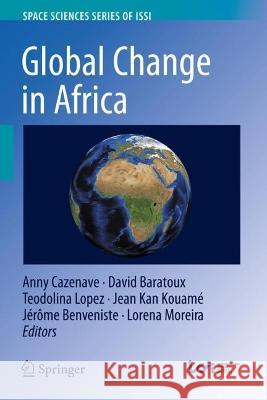Global Change in Africa » książka
topmenu
Global Change in Africa
ISBN-13: 9783031392733 / Angielski / Twarda / 2023
The main objective of this book is to provide an overview of the benefit of using Earth Observation data to monitor global environmental changes due to natural phenomena and anthropogenic forcing factors over the African continent, and highlight a number of applications of high societal relevance.
The main topics presented in the book concern: water resources, floods and droughts, coastal zones changes and exploitation of mineral resources and its impact on the environment.
The chapters "Enhancing the Uptake of Earth Observation Products and Services in Africa Through a Multi-level Transdisciplinary Approach", "Water Resources in Africa under Global Change: Monitoring Surface Waters from Space", "Correction to: Water Resources in Africa under Global Change: Monitoring Surface Waters from Space", "Water Resources in Africa: The Role of Earth Observation Data and Hydrodynamic Modeling to Derive River Discharge", "The Role of Space-Based Observations for Groundwater Resource Monitoring over Africa", "Hydrometeorological Extreme Events in West Africa: Droughts", "Hydrometeorological Extreme Events in Africa: The Role of Satellite Observations for Monitoring Pluvial and Fluvial Flood Risk", "Artisanal Exploitation of Mineral Resources: Remote Sensing Observations of Environmental Consequences, Social and Ethical Aspects" and "Coastal Zone Changes in West Africa: Challenges and Opportunities for Satellite Earth Observations" are available open access under a Creative Commons Attribution 4.0 International License via link.springer.com.
Previously published in Surveys in Geophysics, Volume 44, Issue 1, 2023











